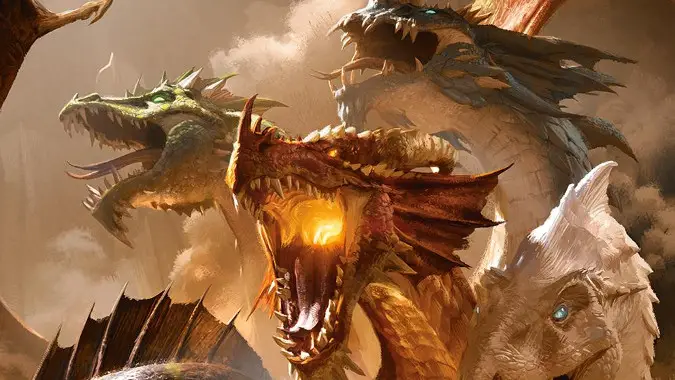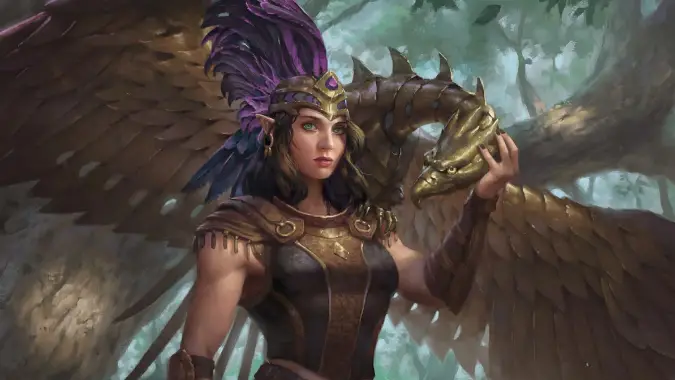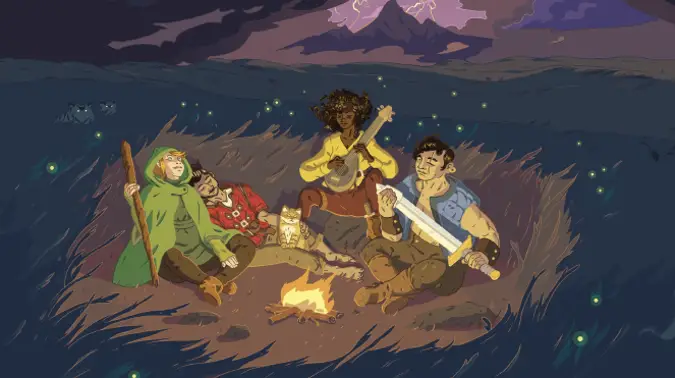You don’t need to concern yourself with realism in your TTRPG campaign

People use the word ‘realism’ or ‘realistic’ a lot in gaming, and it’s something to consider, but for an aspiring Tabletop RPG game master it’s toxic to concern yourself too much with it. In fact, we need to really establish what people mean when they use that word — realism — and what you should be striving for when you’re running a game. Because in a world with Dragons and Elves, ‘realism’ isn’t really useful.
But before we even get to that, let me emphasize this one simple fact — as the person running the game, and alongside the people playing in it, you never need to allow what actually happened in history to constrain you. You need to establish enough consistency to maintain a sense of verisimilitude, yes — your players must be able to suspend their senses of disbelief. It is your job to help them do this, and that means you must pay attention to the details you introduce. But you never need to worry about what did happen, unless you’re running a game set in a specific historical period.
Even then, things are often much stranger than people would believe.

What is reality when your setting contains dragons, anyway?
If you are playing in a homebrew campaign — or a purchased setting — that takes place in a fantasy world not our own, then history and ‘realism’ are already out the window. Yes, it’s true that in our world, the northern raiders from Denmark, Norway, and Sweden we call Vikings would never have met Roman Centurions — the Roman Empire had essentially fallen to internal strife and external invasions more than 400 years before the Viking era. But that’s meaningless if your campaign world already has things like Gnomes or Warforged or Tieflings, because none of those have ever even existed, and you’re not on Earth anyway.
Even in a game like Shadowrun which is set in an alternate history on Earth where magic came back and all the fantasy tropes now exist, but history more or less happened the way we understand it (with a few alterations and places where myths and legends turned out to be real) you must always keep in mind that ‘realism’ is a relative concept. There are people who will attempt to hobble you with what they believe to be real in a way that would prevent you and your group from telling the stories you want to tell.
Ignore them.
They’re usually wrong about what’s ‘realistic’ anyway. One of your players wants to play a Viking warrior who was awakened from an ancient tomb, and who believes herself to be one of Odin’s shield maidens? Don’t listen to people who say It’s unrealistic to have a woman be a Viking raider because first off, it’s your game and you can do what you want. Secondly, women were Viking raiders.
Women have fought in multiple historical conflicts. The Celtic attempt to push the Romans out of Britain? Led by a woman. This is not some outlier. From Artemisia of Caria, who fought alongside the Persians during their invasion of Greece, was one of the few who could fight Greeks successfully on the Aegean Sea, to Grace O’Malley, pirate Queen of Ireland, I could list off women who killed people in war all day. So not only isn’t realism important in this case, it’s more ‘realistic’ to actually have women fighters than not to have them.
The same goes for practically every single marginalized group that exists. You don’t have to justify them in your game, but even if you somehow did, they actually existed anyway so you’re already covered.

It’s a game — and it belongs to your group
It goes beyond that, though. Feel free to use the stats for, say, banded mail to give you an in game mechanical idea of how armor as different as the Lorica Segmentata of Ancient Rome (or your fantasy equivalent) and the Japanese Dō-maru or Ō-yoroi. Were these two armors the same in real life? No, of course not. Is it useful to try and come up with entirely different stats for every single potential piece of armor in your game? Almost certainly not. Some game systems embrace this — they’d allow you to describe armor as anything you’d want, and just give it the same stats as any other armor, or maybe have light, medium, and heavy armor categories and let you go from there. Is it realistic? I’d argue that it doesn’t matter — it keeps the game moving, lets people have individual flair and color without clogging up the gameplay with too many rules.
What’s far more important in any game you run is the ability for your players to believe in and play in your world. They don’t need ‘realism’ which is at best a shifting and amorphous target — the commonly held and believed ‘realistic’ standard for dinosaur reconstruction in 1921 would be seen as utterly laughable in 2021, for example, and we’re still discovering new things about our own history that we had lost or forgotten. They need to be able to hand off their doubt and play in your world, trusting that there will be consistency. If you introduce in your game a sect of zealous Monk mage hunters who can cast exactly one spell, Counterspell, as a caster of their character level, you can’t later on have them throwing fireballs around and otherwise just acting like Wizards. You said these people hate magic, why are they suddenly casting Magic Missile?
It is that sense of consistency, of persistent worldbuilding that isn’t just all your ideas, but incorporates character backstories and grounds their characters in the world and uses them to tell other players what that world is like that will build verisimilitude and make the world feel real. And in an RPG, be it a Dungeons and Dragons game set in fabulous Cormyr or a gritty monster-hunters game set in Ancient Greece, it’s way more important that it feels real to the group.
Please consider supporting our Patreon!
Join the Discussion
Blizzard Watch is a safe space for all readers. By leaving comments on this site you agree to follow our commenting and community guidelines.
 @MatthewWRossi
@MatthewWRossi



